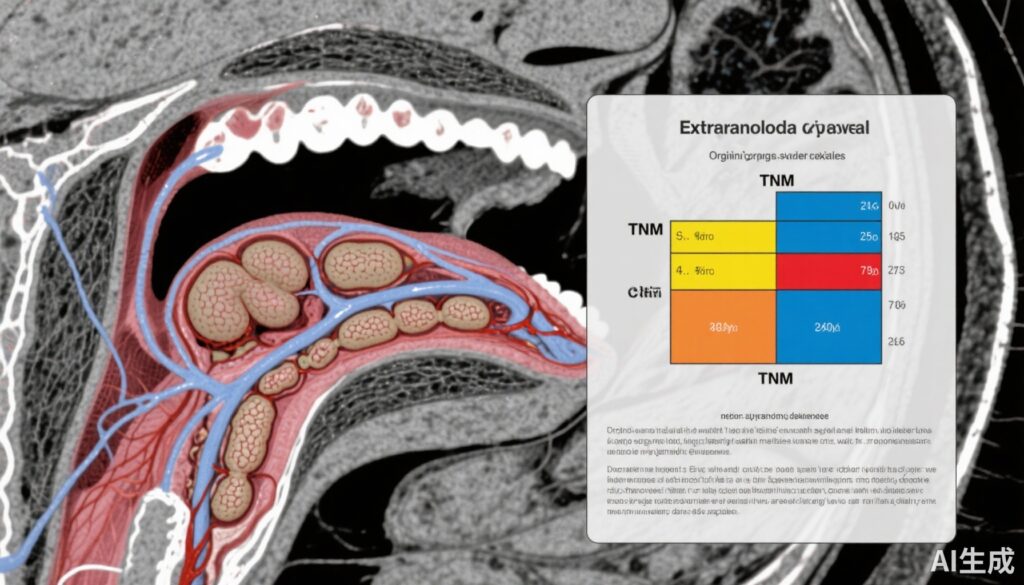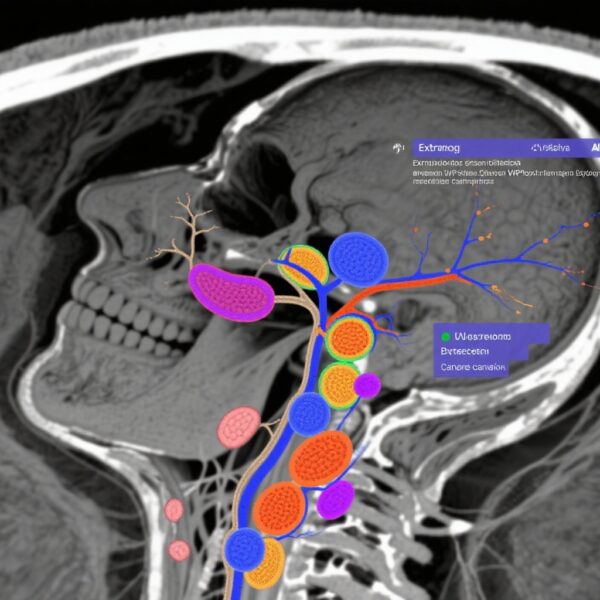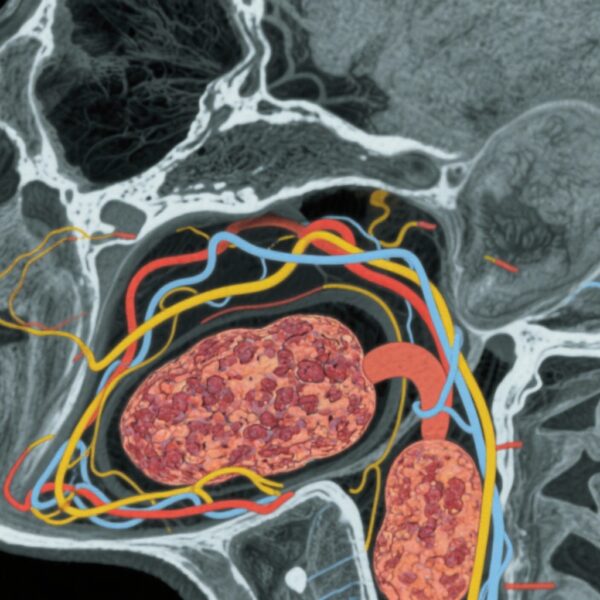Highlight
- A subset of early-stage HPV-positive oropharyngeal carcinoma patients exhibit unfavorable outcomes, challenging current TNM staging accuracy.
- Imaging-detected extranodal extension (iENE) is identified as the strongest prognostic nodal feature in multivariable analyses.
- Reclassifying N categories upward by one stage in the presence of iENE significantly improves survival prediction compared to the UICC/AJCC eighth edition TNM system.
- The proposed ninth edition TNM schema offers superior risk stratification, supporting optimized treatment and clinical trial design.
Study Background
Human papillomavirus (HPV)-associated oropharyngeal carcinoma has distinct biological behavior and generally favorable prognosis compared to HPV-negative cases. Consequently, the eighth edition of the Union for International Cancer Control (UICC)/American Joint Committee on Cancer (AJCC) TNM staging system incorporated HPV status to provide enhanced prognostic discrimination and inform treatment decisions. However, clinical observations and recent phase III deintensification trials have reported suboptimal outcomes in a subset of patients classified as stage I and II under this staging system. Notably, the overrepresentation of cN1 (clinical nodal category 1) within stage I patients suggests a need for revising the N classification to better reflect prognosis and guide therapy. Refinements that improve homogeneity of patient outcomes within staging groups could enhance personalized management and trial design, particularly for decisions around treatment deintensification.
Study Design
This retrospective prognostic cohort study utilized data from an international multi-institutional collaboration (the International Collaboration of Oropharyngeal Cancer Network for N-Classification [ICON-N]) comprising four centers, totaling 2053 patients with HPV-associated oropharyngeal carcinoma treated curatively. An independent dataset from the Centre Hospitalier de l’Université de Montréal (CHUM, n=451) served for external validation. Pretreatment cross-sectional imaging with computed tomography and/or magnetic resonance imaging was centrally reviewed by neuroradiologists to characterize lymph node (LN) features critical for N staging: presence or absence of abnormal LN, involvement of retropharyngeal LNs, laterality (unilateral vs bilateral), number of abnormal LNs, and imaging-detected extranodal extension (iENE). Treatments included definitive chemoradiotherapy/radiotherapy or surgery, with or without postoperative therapy. The primary endpoint was overall survival, analyzed using Cox proportional hazards multivariable models to derive adjusted hazard ratios (AHRs) and to propose an optimized TNM classification schema integrating the prognostic nodal features, especially iENE.
Key Findings
The ICON-N cohort had 1898 (92.5%) patients with cN-positive disease; iENE was present in 37.4% of these cases. Median follow-up was 5.1 years. iENE emerged as the most potent nodal prognostic factor, with an AHR of 2.43 (95% CI, 1.96-3.03) for iENE-positive versus iENE-negative patients in the ICON-N set, and a similar effect size in the CHUM validation cohort (AHR 2.04; 95% CI, 1.28-3.23).
By reclassifying all iENE-positive cases upward by one N category without changing classifications for iENE-negative disease, a new staging schema (AHR-stage schema) was developed. This schema outperformed the current eighth edition TNM system with better discrimination of overall and disease-free survival outcomes, demonstrated by improved hazard consistency and prognostic importance metrics and a favorable normalized score (2 versus 3 for the current system). Importantly, this refinement addressed the heterogeneity within cN1/stage I groups, allowing more homogeneous risk stratification.
Expert Commentary
The inclusion of imaging-detected extranodal extension as a key prognostic determinant represents a significant advance in staging HPV-associated oropharyngeal carcinoma. iENE captures the biological aggressiveness of nodal disease more accurately than size or laterality alone, which traditional classifications emphasize. This adjustment acknowledges the evolving understanding that extranodal extension—not just nodal burden—drives clinical prognosis.
Previous TNM versions underestimated the adverse impact of iENE, potentially explaining inconsistent results in deintensification trials targeting patients clinically staged as low risk. The proposed reclassification logically stratifies patients with iENE into higher-risk strata, aligning staging with observed clinical outcomes and providing a more precise framework for selecting candidates for tailored therapeutic approaches.
Limitations include the retrospective design and reliance on imaging interpretation of ENE, which may vary between radiologists and modalities. Prospective validation and standardization of imaging criteria for ENE will be critical for clinical implementation. Furthermore, integration of molecular markers and treatment response data may further refine prognostic precision in future iterations.
Conclusion
This international multi-institutional cohort study demonstrates that reclassifying HPV-positive oropharyngeal carcinoma patients with imaging-detected extranodal extension one N category higher significantly improves prognostic accuracy for overall and disease-free survival. The proposed ninth edition TNM clinical classification surpasses the current eighth edition in risk stratification and offers a promising tool to optimize patient management, guide individualized treatment strategies, and enhance the design of clinical trials. Adoption of this refined staging system may contribute to improved outcomes and more precise clinical decision-making in this distinct cancer subtype.
Funding and ClinicalTrials.gov
The study details and specific funding sources are referenced in the original publication by Huang et al. There is no clinical trial registration as this was a retrospective cohort analysis.
References
Huang SH, Su J, Koyfman SA, Routman D, Hoebers F, Bahig H, Yu E, Bartlett E, Spreafico A, Lee J, Stock S, Davis R, Woody NM, Nelson K, Lavigne D, Nguyen-Tan PF, Létourneau-Guillon L, Filion E, Nagelschneider AA, Ma D, Van Abel KM, Postma AA, Palm WM, Hoeben A, Lydiatt W, Patel SG, Chua MLK, Xu W, O’Sullivan B. A Proposal for HPV-Associated Oropharyngeal Carcinoma in the Ninth Edition Clinical TNM Classification. JAMA Otolaryngol Head Neck Surg. 2025 Jul 1;151(7):655-664. doi:10.1001/jamaoto.2025.0848. PMID: 40338536; PMCID: PMC12062977.



